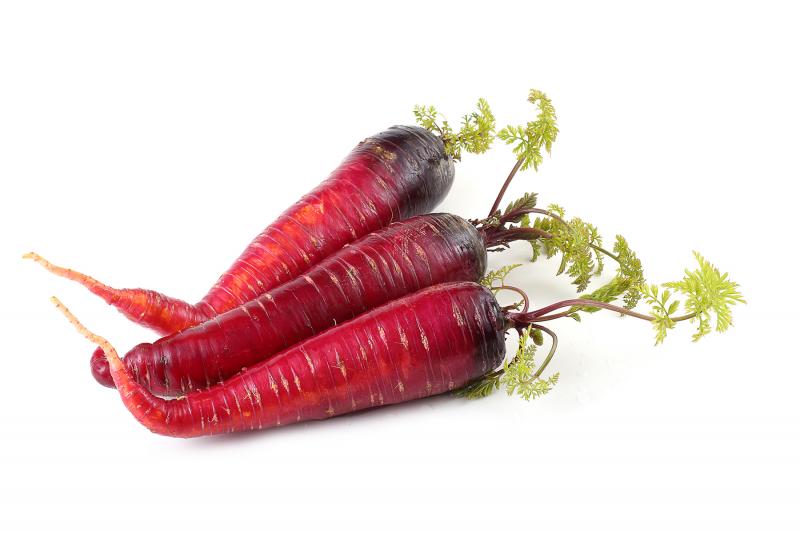Kyoto, Japan, is a city of wonder, with 1,681 temples and 812 shrines. Kyoto residents eat more bread and drink more coffee than people anywhere else in Japan. They also eat a delicious red carrot, the Kyoto red carrot.
These brilliant-red carrots are traditionally eaten on the Japanese New Year, when they are carved into the shape of plum blossoms to represent fertility in the new year. They have a particular texture and a very sweet flavor. This is a perfect variety to plant during the summer for fall harvest.
Red carrots (Daucus carota subsp. sativus) get their color from the pigment lycopene, the same compound that makes the red color in watermelons, papayas and tomatoes. In addition to the Kyoto red carrot, another good red variety is Atomic Red carrots.
All red carrots contain lots of vitamins, such as vitamins A, C, B1, B2, B3 and B6. Red carrots also contain the minerals calcium, iron, magnesium, phosphorus and potassium. As a healthy bonus, red carrots are low in calories and high in dietary fiber, so they fill you up without making you gain weight.
Carrots grow best in full sun, in fluffy, light soil with a pH of 6.0-6.8. Sow red carrot seeds directly outdoors as soon as you can dig the soil. Plant the seeds thinly in rows 12 inches apart and cover them with 1/2-inch of fine soil. The tapered roots will grow 10-18 inches long. Never transplant carrots, or you will end up with roots that are crooked and forked.
After the seeds sprout, thin plants to stand 2 inches apart. Keep the plants well-watered during dry periods to promote uninterrupted growth, but avoid overwatering. Keep the soil moist but not soggy. Carrots need about 1 inch of water per week. Go easy on any fertilizer.
You can harvest your red carrots by midsummer and plant a second crop for a fall harvest. When storing carrots, cut off the leafy tops. Because carrots are heat sensitive, they grow well among tomato plants that can give them a little shade. Tomatoes produce solanine, a natural insecticide that repels insect pests from carrot plants. Tomatoes also benefit from being near carrots because the long carrot taproot opens up the soil, letting more air and water reach all the plants’ roots. Leeks also grow well with carrots, since leeks repel carrot flies, and carrots repel leek moths and onion flies. Chives, onions, rosemary and sage also repel carrot flies.
If you must fertilize, use a fertilizer that is high in potassium and phosphate and very low in nitrogen, and only apply it at half the recommended concentration. Too much fertilizer will result in tasteless carrots with forked or hairy roots.
Carrots can be harvested at any time. For easier pulling, water the carrot beds before digging the roots. You can leave your red carrots right in the ground after frost. Cover them with straw and you can harvest red carrots well into the winter.
Plant red carrots for a healthy, sweet, summer treat, and dream of temples and pagodas. You will feed your body while you feed your soul.





















































